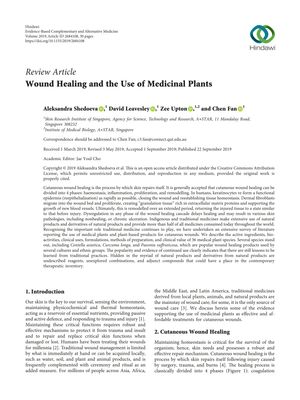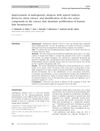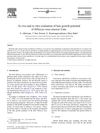Wound Healing and the Use of Medicinal Plants
September 2019
in “Evidence-based Complementary and Alternative Medicine”

TLDR Some medicinal plants can help heal wounds and may lead to new treatments.
The 2019 review article examined the role of medicinal plants in cutaneous wound healing, a process consisting of four phases: haemostasis, inflammation, proliferation, and remodelling. The authors surveyed 36 plant species, detailing their active ingredients, bioactivities, clinical uses, and preparation methods. They found that plants such as Centella asiatica, Curcuma longa, and Paeonia suffruticosa are widely used in traditional medicine for their wound healing properties. The review highlighted the potential of these plants to offer novel treatments for modern therapeutic challenges, emphasizing the importance of integrating traditional knowledge with contemporary medicine. The document also discussed the complexity of chronic wounds and the need for appropriate clinical strategies in wound management. It underscored the significance of natural products in pharmaceutical development, with many modern drugs being derived from medicinal plants. The review included a table summarizing the medicinal plants, their components, and therapeutic effects, which range from antimicrobial to proangiogenic activities. The work aimed to leverage traditional practices to benefit a wider population, considering the inaccessibility and unaffordability of modern medicine for many people globally.
View this study on hindawi.com →
Cited in this study

research Improvement of androgenetic alopecia with topicalSophora flavescensAiton extract, and identification of the two active compounds in the extract that stimulate proliferation of human hair keratinocytes
Sophora flavescens extract helps hair growth and treats hair loss.

research In vivo and in vitro evaluation of hair growth potential of Hibiscus rosa-sinensis Linn.
Hibiscus rosa-sinensis leaf extract helps hair grow longer and faster.